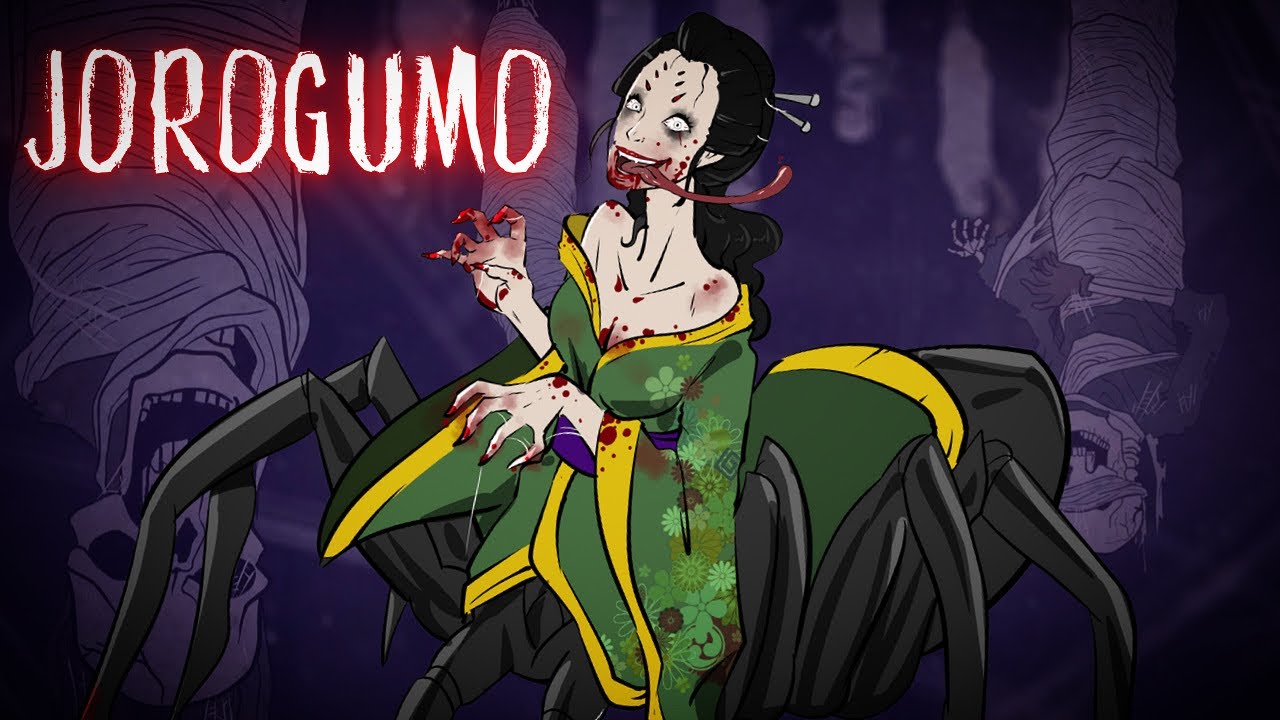
when Horror Yearbook – Jorōgumo is one of the most captivating and terrifying figures in Japanese folklore. Often referred to as the Binding Bride Spider, this yokai disguises herself as a beautiful woman. She appears near remote places such as forests or waterfalls and invites unsuspecting men to her home. There, she transforms into a monstrous spider and devours them. The story of Jorōgumo is not just a tale of horror but also a reflection on trust, illusion, and the danger of desire. Her legend continues to stir fear and fascination in Japanese culture, blending nature and supernatural mystery. Through various adaptations in literature, art, and modern media, Jorōgumo still lurks in the imagination of many, symbolizing the age-old warning that beauty can be a deadly trap.
Jorōgumo tales have been passed down for centuries in different regions of Japan. According to one of the most famous versions, she dwells near waterfalls such as the Jōren Falls in Izu. In this version, a beautiful woman lures travelers and fishermen with music and charm. She invites them into her secluded home, where they are never seen again. Jorōgumo’s origin is deeply rooted in animistic beliefs, where natural features like rivers and forests possess spirits. Over time, the legend of the spider woman was shaped by oral storytelling and regional superstition. The name Jorōgumo originally described a real orb-weaving spider. As folk stories evolved, that spider gained mystical qualities and became a predator in disguise. Jorōgumo embodies both nature’s beauty and its unpredictability, showing how quickly serenity can turn to horror.
“Read about: Is Kuyang a Human? Exploring a Chilling Indonesian Folklore”
The tale of Jorōgumo carries powerful symbolic weight. It represents the fear of being deceived by appearances. Her beauty distracts from her deadly nature, warning listeners not to trust too quickly. In some interpretations, Jorōgumo reflects a fear of feminine power or seduction. She is not simply a monster but a figure of autonomy and dominance. This portrayal contrasts with more traditional female roles in old Japanese society. The legend also symbolizes the merging of human and natural worlds, especially when nature is seen as untamable. Waterfalls and forests are peaceful, yet the presence of Jorōgumo reminds us that danger hides even in beauty. This duality gives the story its lasting appeal. Jorōgumo’s transformation is also interpreted as a metaphor for how people reveal their true selves when it’s too late to escape. The tale is unsettling because it feels timeless and universally relatable.
Jorōgumo has appeared in a wide range of Japanese art and popular culture. Ukiyo-e prints from the Edo period often portrayed her in both woman and spider form. In kabuki theater, her character sometimes dances seductively before revealing her monstrous side. These performances highlight how folklore blends with entertainment and social commentary. In modern times, Jorōgumo has been featured in manga, anime, and even video games. Some stories portray her as a tragic figure, cursed by her form and desperate for love. Others embrace her as a villain who enjoys the hunt. This versatility allows her to remain relevant across generations. Japanese horror cinema occasionally draws inspiration from her myth. Her symbolism fits well in stories where characters face moral dilemmas or get trapped by illusions. Even beyond Japan, the idea of the deadly seductress has been echoed in global media, showing the wide impact of the Jorōgumo myth.
“Read more: French Impressionism Shines in Melbourne’s NGV International Exhibition”
The legend of Jorōgumo survives because it taps into deep fears about trust, illusion, and transformation. In a world filled with curated appearances and surface-level impressions, her tale reminds people to look beyond what is seen. Although the setting may feel ancient, the message feels current. Stories like hers encourage critical thinking and awareness of hidden motives.
They also allow safe exploration of danger through storytelling. Jorōgumo is not merely a monster in the shadows but a warning that is still relevant. Her presence in folklore gives insight into how past societies viewed gender roles, power, and fear. Yet she evolves with time. Artists and storytellers reinterpret her in new ways, proving the legend’s adaptability. The fascination remains strong because the balance of beauty and horror is universally compelling. Jorōgumo is more than a tale from Japan’s past she is a living myth that continues to weave her web in the minds of those who hear her story.